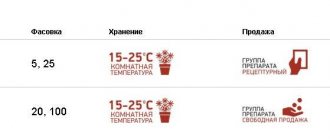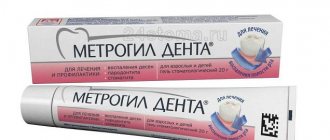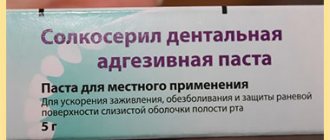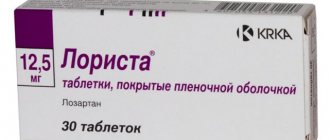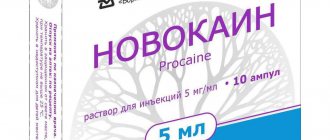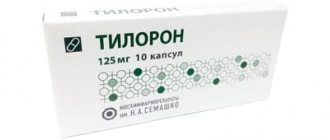- May 21, 2020
- Neurology
- Ulyana Romanova
“Spazgan” in ampoules, instructions for use of which will be studied in this article, is a combined antispasmodic and analgesic agent. Since it is quite common, you should talk about the conditions for which it is prescribed, how it should be taken, and whether there are any contraindications.
Contraindications
- Hypersensitivity (including to pyrazolone derivatives), inhibition of bone marrow hematopoiesis, severe hepatic and/or renal failure, glucose-6-phosphate dehydrogenase deficiency, tachyarrhythmias, severe angina pectoris, decompensated chronic heart failure, angle-closure glaucoma, prostatic hyperplasia (with clinical manifestations), intestinal obstruction, megacolon, collapse, pregnancy (especially in the first trimester and the last 6 weeks), lactation.
- For intravenous administration - infancy (up to 3 months) or body weight less than 5 kg. For tablets - children's age (up to 5 years).
- With caution: renal/liver failure, bronchial asthma, tendency to arterial hypotension, hypersensitivity to NSAIDs; urticaria or acute rhinitis caused by taking acetylsalicylic acid or other NSAIDs.
Relative contraindications
With great caution, the doctor may prescribe Spazgan injections in the following cases:
- Liver and kidney failure without complications.
- Acute rhinitis or urticaria, provoked by treatment with NSAIDs or acetylsalicylic acid.
- Bronchial asthma.
- Hypersensitivity to NSAIDs.
- Tendency to arterial hypotension.
That is why self-medication is prohibited. Ignoring instructions and medical prescriptions often leads to serious consequences.
pharmachologic effect
A combined analgesic and antispasmodic agent, the combination of drug components leads to a mutual enhancement of their pharmacological action. Metamizole sodium is a pyrazolone derivative that has an analgesic and antipyretic effect. Pitophenone hydrochloride has a direct myotropic effect on smooth muscles (papaverine-like effect). Phenpiverinium bromide has an m-anticholinergic effect and has an additional myotropic effect on smooth muscles.
Compound
To begin with, it should be noted that this drug is also available in tablet form. But now we will talk about Spazgan for injection. In pharmacies it can be found in ampoules. Inside is a solution, 1 ml of which contains the following substances:
- Phenpiverinium bromide – 20 mcg.
- Pitophenone hydrochloride – 2 mg.
- Metamizole sodium – 500 mg.
The average cost of a package with five ampoules is 150 rubles.
Dosage
Orally: adults and adolescents over 15 years of age: 1-2 tablets. 2-3 times a day, without chewing, with a small amount of liquid. Children 12-14 years old: single dose - 1 tablet, maximum daily dose - 6 tablets. (1.5 tablets 4 times/day), 8-11 years old - 0.5 tablets, maximum daily dose - 4 tablets. (1 tablet 4 times/day), 5-7 years - 0.5 tablets, maximum daily dose - 2 tablets. (0.5 tablet 4 times/day). Parenterally (i.v., i.m.). For adults and adolescents over 15 years of age with acute severe colic, 2 ml are administered intravenously slowly (1 ml over 1 minute); if necessary, re-inject after 6-8 hours. IM - 2-5 ml of solution 2-3 times a day. The daily dose should not exceed 10 ml. The duration of treatment is no more than 5 days. Dose calculation for children with IV and IM administration: 3-11 months (5-8 kg) - IM only - 0.1-0.2 ml; 1-2 years (9-15 kg) - IV - 0.1-0.2 ml, IM - 0.2-0.3 ml; 3-4 years (16-23 kg) - IV - 0.2-0.3, IM - 0.3-0.4 ml; 5-7 years (24-30 kg) - IV - 0.3-0.4 ml, IM - 0.4-0.5 ml; 8-12 years (31-45 kg) - IV - 0.5-0.6 ml, IM - 0.6-0.7 ml; 12-15 years - IV and IM - 0.8-1 ml. Before administering the injection solution, it should be warmed in your hand.
Release form and composition
Dosage forms of Spazgan:
- Tablets (10 pieces each in blister packs, 2 or 10 packs in a cardboard pack);
- Solution for intramuscular and intravenous administration (5 ml in ampoules, 5 ampoules in plastic contour packages, 1 or 5 packages in a cardboard box; 5 ml in ampoules, 5 ampoules in a cardboard box).
Active ingredients of the drug:
- Metamizole sodium: in 1 tablet – 500 mg, in 1 ml of solution – 500 mg;
- Pitophenone hydrochloride: 1 tablet – 5 mg; in 1 ml of solution – 2 mg;
- Phenpiverinium bromide: in 1 tablet – 0.1 mg, in 1 ml of solution – 0.02 mg.
Side effects
Allergic reactions: urticaria (including on the conjunctiva and mucous membranes of the nasopharynx), angioedema, in rare cases - malignant exudative erythema (Stevens-Johnson syndrome), toxic epidermal necrolysis (Lyell's syndrome), bronchospastic syndrome, anaphylactic shock. From the urinary system: impaired renal function, oliguria, anuria, proteinuria, interstitial nephritis, red staining of urine. From the cardiovascular system: decreased blood pressure. From the hematopoietic system: thrombocytopenia, leukopenia, agranulocytosis (may be manifested by the following symptoms: unmotivated rise in temperature, chills, sore throat, difficulty swallowing, stomatitis, as well as the development of vaginitis or proctitis). Anticholinergic effects: dry mouth, decreased sweating, accommodation paresis, tachycardia, difficulty urinating. Local reactions: with intramuscular injection, infiltrates are possible at the injection site.
Indications for use
- moderate or mild pain syndrome with: renal and biliary colic, intestinal spasms, dysmenorrhea and other spasms of internal organs
- for joint pain, neuralgia, sciatica, myalgia
- after surgical and diagnostic interventions, as an adjuvant to relieve pain
- pain and fever in acute viral and bacterial diseases of the upper respiratory tract, as well as other infectious and inflammatory diseases.
Drug interactions
The solution for injection is pharmaceutically incompatible with other drugs. When combined with histamines and H1-blockers, butyrophenones, phenothiazines, tricyclic antidepressants, amantadine and quinidine, the m-anticholinergic effect may be enhanced. Enhances the effects of ethanol; simultaneous use with chlorpromazine or other phenothiazine derivatives can lead to the development of severe hyperthermia. Tricyclic antidepressants, oral contraceptives and allopurinol increase the toxicity of the drug. Phenylbutazone, barbiturates and other liver enzyme inducers, when administered simultaneously, reduce the effectiveness of metamizole sodium. Sedative and anxiolytic drugs (tranquilizers) enhance the analgesic effect of metamizole sodium. Radiocontrast drugs, colloidal blood substitutes and penicillin should not be used during treatment with drugs containing metamizole sodium. With simultaneous administration of cyclosporine, the concentration of the latter in the blood decreases. Metamizole sodium, displacing oral hypoglycemic drugs, indirect anticoagulants, corticosteroids and indomethacin from protein binding, can increase the severity of their action. Thiamazole and cytostatics increase the risk of developing leukopenia. The effect is enhanced by codeine, H2-histamine receptor blockers and propranolol (slows down the inactivation of metamizole sodium).
Impact on the body
Now it’s worth talking about what effect this drug has. It is due to the composition of “Spazgan” in ampoules:
- Pitophenone hydrochloride has a myotor effect on the smooth muscles of internal organs. As a result, they relax. This process is also called papaverine-like.
- Metamizole sodium is a pyrazolone derivative. Due to it, the drug has weak anti-inflammatory, antipyretic and analgesic effects. The mechanism of action is directly due to inhibition of prostaglandin synthesis.
- Phenpiverinium bromide has an M-anticholinergic and myotropic effect on smooth muscles.
The combination of these factors makes Spazgan a combined remedy in which the components mutually enhance each other’s effects.
special instructions
During treatment with the drug, it is not recommended to take ethanol. With long-term (more than a week) treatment, monitoring of the peripheral blood picture and the functional state of the liver is necessary. If agranulocytosis is suspected or thrombocytopenia is present, the drug should be discontinued. It is not permissible to use it to relieve acute abdominal pain (until the cause is determined). Intolerance is very rare, but the risk of developing anaphylactic shock after intravenous administration of the drug is relatively higher than after taking the drug orally. Patients with atopic bronchial asthma and hay fever have an increased risk of developing allergic reactions. Parenteral administration should be used only in cases where oral administration is not possible (or absorption from the gastrointestinal tract is impaired). Special caution is required when administering more than 2 ml of solution (risk of a sharp decrease in blood pressure). The IV injection should be carried out slowly, in the “lying” position and under the control of blood pressure, heart rate and respiratory rate. When treating children under 5 years of age and patients receiving cytostatics, metamizole sodium should only be taken under medical supervision. For intramuscular administration it is necessary to use a long needle. It is possible that the urine may turn red due to the release of a metabolite (it has no clinical significance).
Impact on the ability to drive vehicles and operate machinery
During treatment, drivers of vehicles and persons engaged in potentially hazardous activities that require quick physical and mental reactions should be careful.
Reviews
Finally, it is worth talking about the opinion regarding this drug held by doctors who regularly use it in their practice. In the reviews left about “Spazgan” in ampoules, they call it an excellent pain reliever that quickly stops even the most severe attacks, especially if administered intravenously.
Many doctors prescribe it to relieve migraines. Because it is an antispasmodic, characterized by an analgesic effect. Even in tablets it demonstrates its effectiveness.
People to whom doctors have prescribed this drug for the treatment of certain conditions also note the availability and effectiveness of Spazgan. This is a reliable, time-tested, and also cheap combination product. With a wide spectrum of action, too! “Spazgan” will help get rid of both painful menstrual discomfort and muscle-tonic and myofascial syndromes.
The main thing is not to self-medicate. Only a doctor can prescribe this drug to a patient, and then only after conducting an examination, studying his medical history and tests.
Pharmacological properties
Spazgan is characterized as a non-narcotic analgesic and antispasmodic agent.
The active component metamizole is a pyrazole derivative. With its help, antipyretic, analgesic and mild anti-inflammatory effects are achieved.
Fenpiverine is an effective anticholinergic blocker; it has an antispasmodic effect on smooth muscles.
Pitophenone (like papaverine) is characterized by a direct myotropic effect; when it enters the body, smooth muscles relax.
When administered intramuscularly or intravenously, the active substances are quickly absorbed and distributed throughout the body. The bioavailability of metamizole reaches 85%. About 50-60% of the substance binds to proteins contained in blood plasma. It is able to cross the placental and blood-brain barriers.
The process of biotransformation of the drug occurs in the liver tissues. After the breakdown of metamizole, metabolites are formed that also have pharmacological activity.
The maximum concentration of the drug is achieved 30-90 minutes after taking the drug. Excretion of active substances is carried out by the kidneys. In this case, 3% of the drug leaves the body unchanged. The other part breaks down into metabolites. T ½ is 10 hours.
